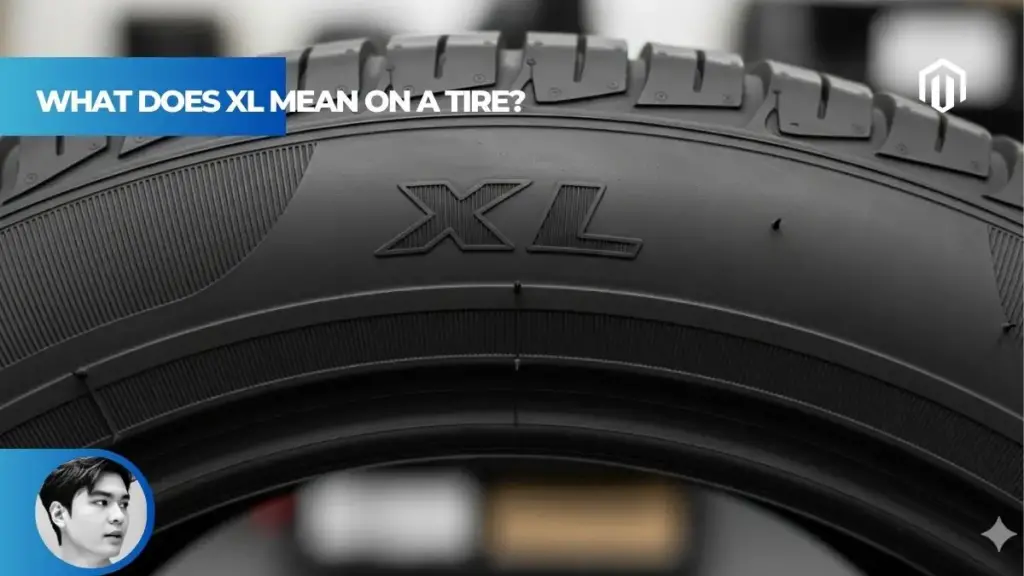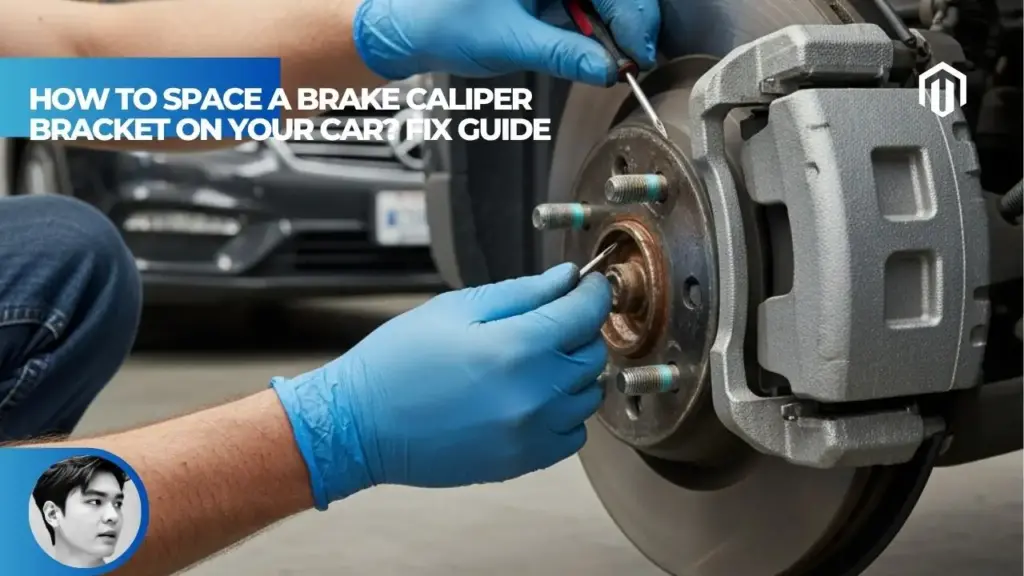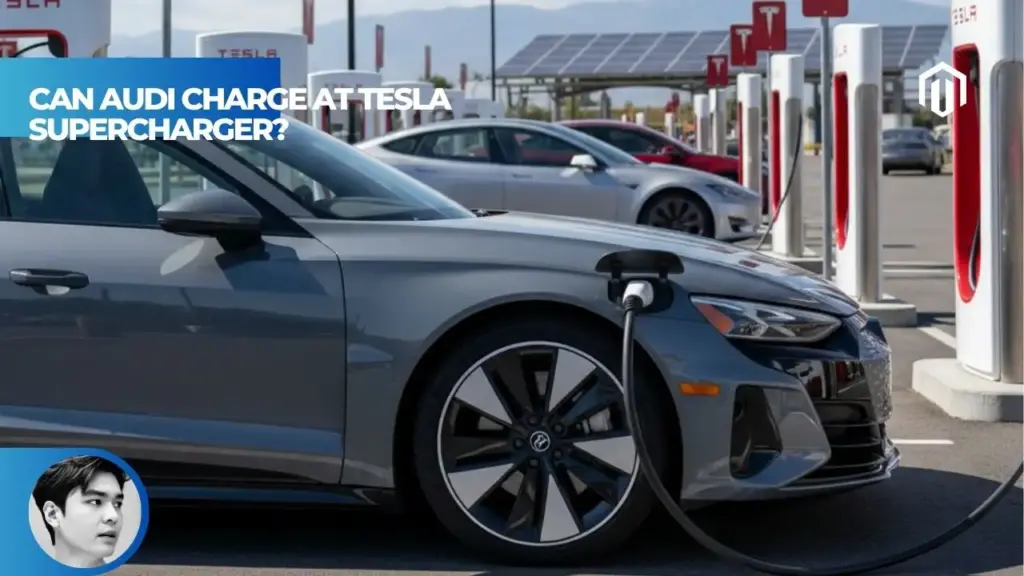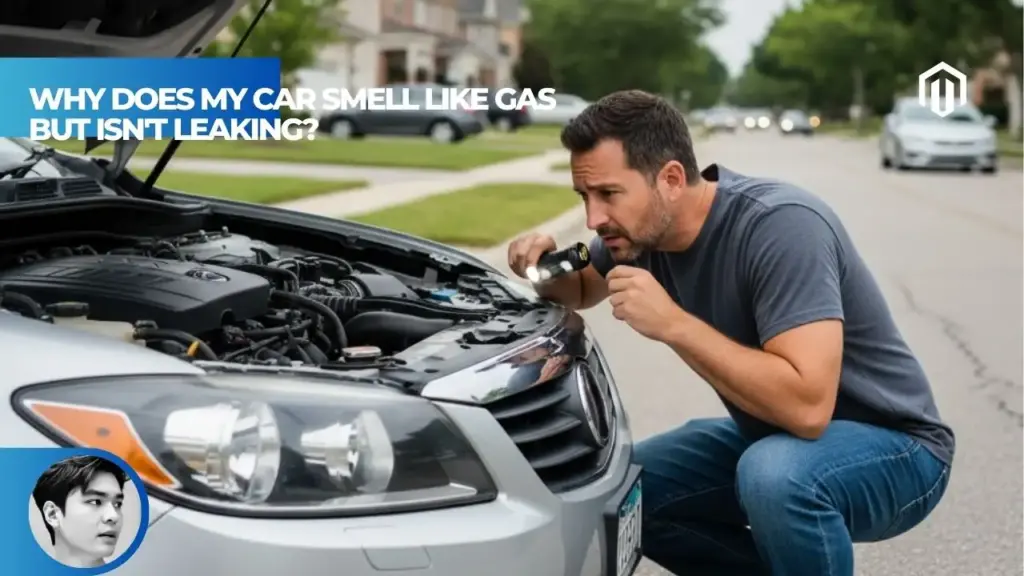You may also like:
- 【Review】Top 5 Best Cheapest Tires for an Audi (The Ultimate 2025 Value Guide)
- 【Review】Top 7 Best Tires for Audi (A 2025 Buyer’s Guide)
- 【Explained】Top 5 Best Snow Tires for Audi (A 2025 Buyer’s Guide)
- 【Review】Top 5 Best Summer Tires for Audi (A 2025 UHP Guide)
- 【Review】Top 5 Best All-Season Tires for Audi (2025 UHP Review)
XL on a tire stands for “Extra Load,” not “Extra Large,” indicating reinforced internal construction that allows the tire to safely carry heavier weights at higher air pressures (typically 41-42 PSI) compared to Standard Load (SL) tires of the exact same physical dimensions. If your vehicle’s door placard specifies XL tires, you must replace them with XL tires to maintain safety and proper handling characteristics.
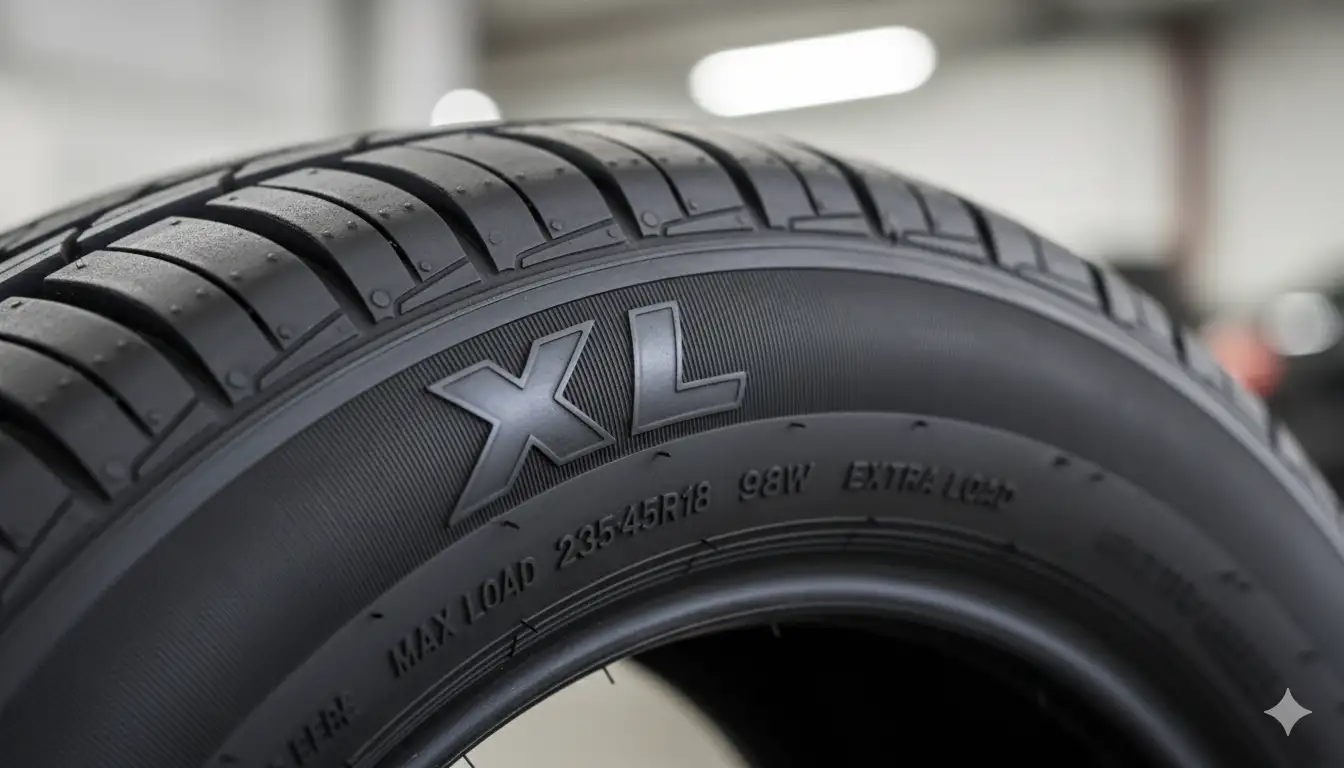
What Does XL Stand For on a Tire – The Direct Answer
The XL designation on tires represents one of the most commonly misunderstood markings in the automotive industry. Understanding this critical specification ensures proper tire selection and vehicle safety.
Extra Load Tire Meaning (Not “Extra Large”)
The “XL” marking definitively means “Extra Load,” referring to the tire’s enhanced load-carrying capacity[1]. This designation indicates that the tire has been engineered with reinforced construction to support greater weight than a standard tire of identical size. The Extra Load design allows these tires to safely handle approximately 10-20% more weight than their Standard Load counterparts.
XL on Tire Sidewall – What You’re Actually Seeing
When examining your tire’s sidewall, the XL marking typically appears near the size designation. For example, you might see “225/60R18 103H XL” where the XL confirms Extra Load construction[2]. Understanding tire markings helps ensure proper replacement choices. The placement and formatting may vary by manufacturer, but the meaning remains consistent across all brands.
XL Marking on Tire vs RF (Reinforced) Designation
Some manufacturers use “RF” (Reinforced) or “RFD” (Reinforced) instead of XL, though both indicate the same Extra Load capability[3]. European tire manufacturers particularly favor the RF designation, while XL remains more common in the American market. You might also encounter “EL” (Extra Load) on certain brands, all meaning the same thing: enhanced load capacity through reinforced construction.
Does XL on a Tire Mean Extra Large? (Common Misconception)
No, XL absolutely does not mean “Extra Large” in terms of physical dimensions. An XL tire measures exactly the same externally as a Standard Load tire of the same size designation[1]. The confusion stems from clothing and other industries where XL commonly means extra large. In tire terminology, the “extra” refers solely to load capacity, not physical size.
XL vs SL Tire – The Core Differences
Understanding the distinctions between Extra Load and Standard Load tires helps vehicle owners make informed decisions about tire selection and replacement.
What Is a Standard Load (SL) Tire?
Standard Load tires represent the baseline specification for passenger vehicles, designed to meet the typical weight requirements of sedans, coupes, and lighter crossovers[4]. These tires operate at a maximum inflation pressure of 35-36 PSI and feature conventional construction adequate for vehicles within standard weight ranges. Most used cars come equipped with SL tires unless specifically designed for heavier loads.
Difference Between XL and SL Tires
The fundamental differences between these tire types extend beyond simple load capacity:
| Feature | Standard Load (SL) | Extra Load (XL) |
|---|---|---|
| Max Pressure | 35-36 PSI | 41-42 PSI |
| Construction | Standard reinforcement | Extra plies/reinforced sidewalls |
| Load Capacity | Standard for size | 10-20% higher |
| Sidewall Stiffness | Normal flexibility | Increased rigidity |
| Typical Applications | Sedans, light vehicles | SUVs, EVs, minivans |
Tire Load Index Explained
The load index represents a numerical code indicating the maximum weight each tire can support when properly inflated[5]. For example:
- SL tire: 225/60R18 99H – Load index 99 = 775 lbs per tire
- XL tire: 225/60R18 103H XL – Load index 103 = 1,929 lbs per tire
This substantial difference demonstrates why proper tire selection proves critical for vehicle safety.
Higher Load Capacity Tire Requirements
According to Autvex experts, vehicles requiring higher load capacity tires include:
Common XL tire applications:
- Mid-size and full-size SUVs
- Electric vehicles with heavy battery packs
- Minivans designed for 7-8 passengers
- Performance vehicles with enhanced suspension
- Light trucks used for frequent hauling
How Are XL Tires Reinforced – Construction & Physics
The engineering behind Extra Load tires involves sophisticated reinforcement techniques that maintain the same external dimensions while increasing strength.
Stronger Sidewall Construction
XL tires achieve their enhanced capacity through additional rubber compounds and reinforcing cords in the sidewall construction[6]. Premium tire manufacturers use various reinforcement methods including:
- Extra polyester or steel cord layers
- Thicker bead bundles for rim attachment
- Enhanced shoulder reinforcement
- Stronger belt packages under the tread
These modifications create a more robust structure without changing the tire’s external appearance.
Do XL Tires Need More Air Pressure?
Yes, XL tires require higher air pressure to achieve their rated load capacity. The typical 41-42 PSI maximum for XL tires compared to 35-36 PSI for SL tires represents a crucial difference[7]. This increased pressure works in conjunction with the reinforced construction to support additional weight safely.
XL Tire Higher PSI Requirements (41-42 PSI vs 35-36 PSI)
The pressure differential serves multiple purposes:
Why XL tires need higher pressure:
- Maintains tire shape under heavier loads
- Reduces sidewall flex during cornering
- Prevents excessive heat buildup
- Ensures proper contact patch distribution
- Maximizes load-carrying efficiency
It’s critical to note that running XL tires at standard SL pressures negates their load-carrying advantages and can lead to premature wear or failure.
XL Tire Pressure vs SL Comparison
Real-world pressure requirements vary based on vehicle specifications:
| Vehicle Type | SL Tire Pressure | XL Tire Pressure |
|---|---|---|
| Compact Sedan | 32-35 PSI | Not typically used |
| Mid-Size SUV | 35 PSI | 38-40 PSI |
| Full-Size SUV | N/A | 40-42 PSI |
| Electric Vehicle | N/A | 40-42 PSI |
| Minivan | 35 PSI | 38-41 PSI |
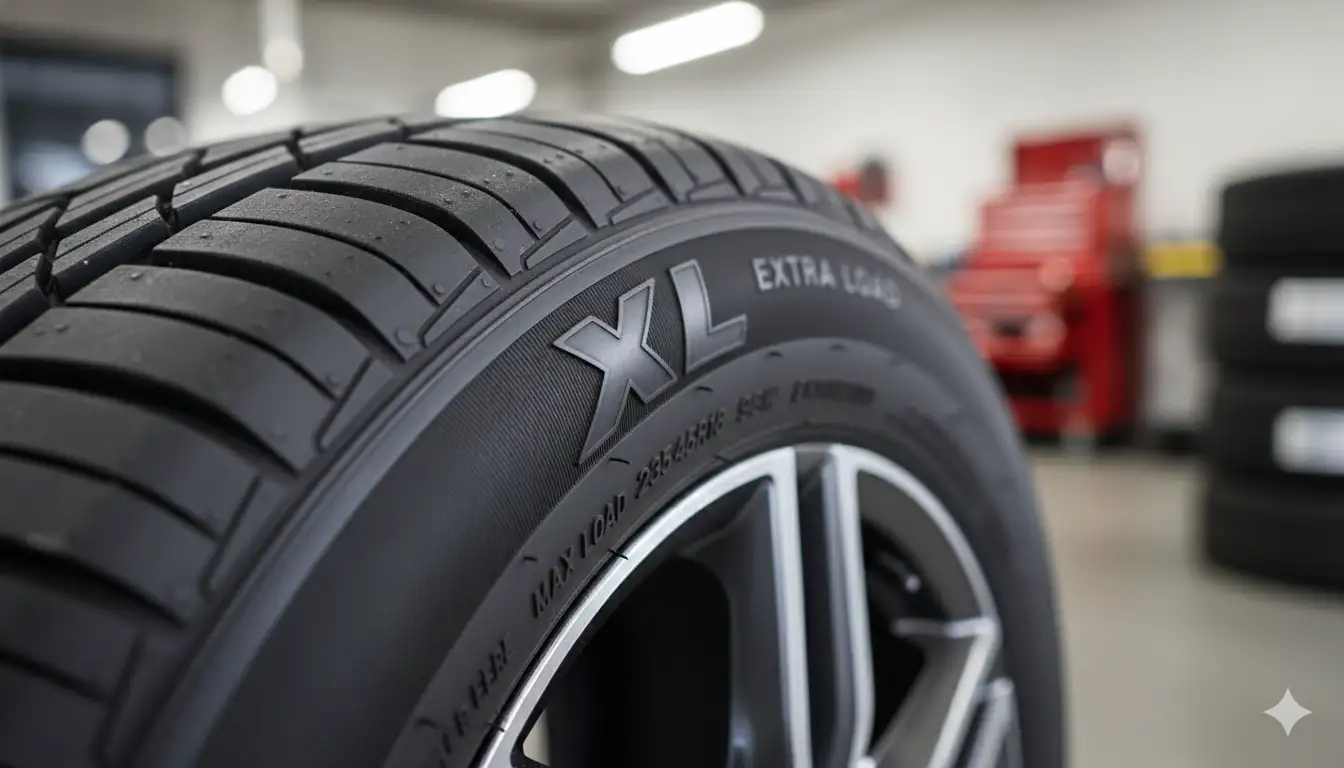
Do I Need XL Tires? – Purchase Decision Guide
Determining whether your vehicle requires Extra Load tires involves checking manufacturer specifications and understanding your driving needs.
Are XL Tires Required for My Vehicle?
The definitive answer appears on your vehicle’s tire placard, typically located on the driver’s side door jamb[8]. This placard specifies the exact tire size, load rating, and inflation pressure required. If it shows an XL designation or load index requiring Extra Load capacity, you must use XL tires for safety and legal compliance.
What Cars Use XL Tires?
Modern vehicles increasingly require XL tires due to weight increases from safety equipment, comfort features, and electrification:
Vehicles commonly requiring XL tires:
- BMW X5, X7, and larger SUVs
- [Audi Q7] and Q8
- Tesla Model X and Model Y
- Honda Pilot and Odyssey
- Toyota Highlander and Sienna
- Most three-row SUVs
XL Tires for SUV Applications
SUVs represent the largest segment requiring XL tires due to their combination of vehicle weight and cargo capacity[2]. Luxury compact SUVs increasingly specify XL tires as standard equipment. The added weight of AWD systems, larger engines, and premium features pushes many SUVs beyond Standard Load tire capabilities.
XL Tires for Electric Vehicles (EVs)
Electric vehicles present unique challenges requiring XL tire specifications:
Why EVs need XL tires:
- Battery packs add 500-1,200 lbs over comparable gas vehicles
- Weight distribution differs from traditional vehicles
- Instant torque delivery stresses tires differently
- Regenerative braking increases tire loads
- Lower center of gravity affects cornering forces
Tesla, Rivian, and most other EV manufacturers specify XL tires as standard equipment[9].
Vehicle Tire Placard – Where to Check Requirements
According to Autvex’s guidance, always verify tire requirements at these locations:
- Driver’s door jamb (most common)
- Inside the fuel filler door
- Glove compartment door
- Owner’s manual specifications
- Under-hood decal (rare)
The placard provides cold tire pressure specifications, which differ from the maximum pressure molded on the tire sidewall.
What Happens If I Use SL Instead of XL Tires?
Installing Standard Load tires on a vehicle requiring Extra Load specifications creates serious safety and legal concerns.
Safety Risks of Wrong Load Rating
Using SL tires where XL is specified can result in catastrophic tire failure under load[10]. Vehicle safety systems depend on proper tire specifications. Specific risks include:
Dangers of under-spec tires:
- Sidewall overheating and blowouts
- Excessive tread wear and separation
- Poor handling and unpredictable steering
- Increased stopping distances
- Suspension damage from excessive flex
XL Tires for Towing Requirements
Towing applications dramatically increase the importance of proper load ratings. When towing, the tongue weight adds significant load to rear tires, often pushing Standard Load tires beyond safe limits. XL tires provide the necessary safety margin for:
- Travel trailers and boats
- Horse trailers
- Utility trailers
- Car haulers
The combined weight of passengers, cargo, and tongue weight can easily exceed SL tire capacity even in mid-size SUVs.
Insurance and Warranty Implications
Installing incorrect tire specifications can void both vehicle warranties and insurance coverage:
Legal and financial risks:
- Manufacturer warranty denial for suspension damage
- Insurance claim rejection after accidents
- Liability issues in multi-vehicle accidents
- Failed safety inspections
- Potential criminal negligence charges
Insurance companies increasingly verify proper tire specifications during claim investigations.
Pros and Cons of Extra Load Tires
Understanding the advantages and disadvantages helps owners make informed decisions when XL tires are optional rather than required.
Are XL Tires Stiffer? (Ride Quality Impact)
Yes, XL tires exhibit noticeably stiffer characteristics due to their reinforced construction[3]. This stiffness affects ride quality in several ways:
- Transmits more road imperfections to the cabin
- Reduces body roll in corners
- Provides more precise steering feel
- Increases impact harshness over bumps
Some drivers appreciate the improved handling, while others find the ride quality compromise unacceptable.
Do XL Tires Have a Rougher Ride?
The reinforced sidewalls that enable higher load capacity also reduce the tire’s ability to absorb road irregularities[6]. Performance-oriented vehicles often use XL tires specifically for their firmer characteristics. Ride quality impacts include:
Comfort differences:
- 15-20% increase in impact harshness
- More pronounced expansion joint impacts
- Increased cabin noise on rough surfaces
- Less compliance over small bumps
Are XL Tires Noisier Than Standard?
Road noise typically increases with XL tires due to:
- Stiffer sidewalls transmitting more vibration
- Less sound dampening from rigid construction
- Different tread block flexibility
- Higher operating pressures
Independent testing shows 2-3 decibel increases in cabin noise levels with XL tires[4].
Do XL Tires Cost More?
XL tires typically cost 10-20% more than equivalent SL tires[5]. Price premiums reflect:
| Cost Factor | Impact on Price |
|---|---|
| Additional materials | +5-8% |
| Complex manufacturing | +3-5% |
| Lower production volume | +2-4% |
| Brand positioning | +0-5% |
Annual tire costs increase by $50-150 for a set of four XL tires compared to SL equivalents.
Do XL Tires Last Longer?
According to Autvex analysis, XL tire longevity depends on application:
When XL tires last longer:
- Used on vehicles requiring them (proper application)
- Maintained at correct pressures
- Subjected to heavy loads regularly
- Driven on rough roads
When XL tires wear faster:
- Over-inflated on light vehicles
- Excessive heat from wrong application
- Irregular wear from stiff sidewalls
Under proper conditions, XL tires may provide 5-10% longer tread life due to robust construction.
XL Tire Physical Dimensions and Other Comparisons
Clarifying dimensional misconceptions and comparing XL tires to other specialty tire types helps complete understanding.
Is an XL Tire a Different Size? (Same Dimensions)
No, XL tires maintain identical external dimensions to SL tires of the same size designation[1]. A 225/60R18 tire measures exactly the same whether SL or XL:
- Same tread width (225mm)
- Same aspect ratio (60%)
- Same rim diameter (18 inches)
- Same overall diameter
- Same circumference
Only the internal construction differs, not the physical size.
XL Tire vs Run Flat Tire Differences
While both feature reinforced sidewalls, XL and run-flat tires serve different purposes:
| Feature | XL Tires | Run-Flat Tires |
|---|---|---|
| Primary Purpose | Higher load capacity | Drive after pressure loss |
| Sidewall Design | Reinforced for weight | Self-supporting structure |
| Emergency Capability | None | 50 miles at 50 mph |
| Weight Penalty | Minimal | 20-30% heavier |
| Cost Premium | 10-20% | 25-50% |
| Ride Quality | Slightly firmer | Noticeably harsher |
Many premium vehicles combine both technologies in XL-rated run-flat tires.
Is an XL Tire Better Than a Standard Tire?
“Better” depends entirely on application requirements:
XL tires are better when:
- Vehicle manufacturer specifies them
- Regularly carrying heavy loads
- Towing frequently
- Wanting maximum safety margin
- Driving aggressively
SL tires are better when:
- Vehicle designed for them
- Prioritizing ride comfort
- Seeking lowest cost
- Maximizing fuel economy
- Daily commuting only
Neither is universally superior; each serves specific purposes effectively.
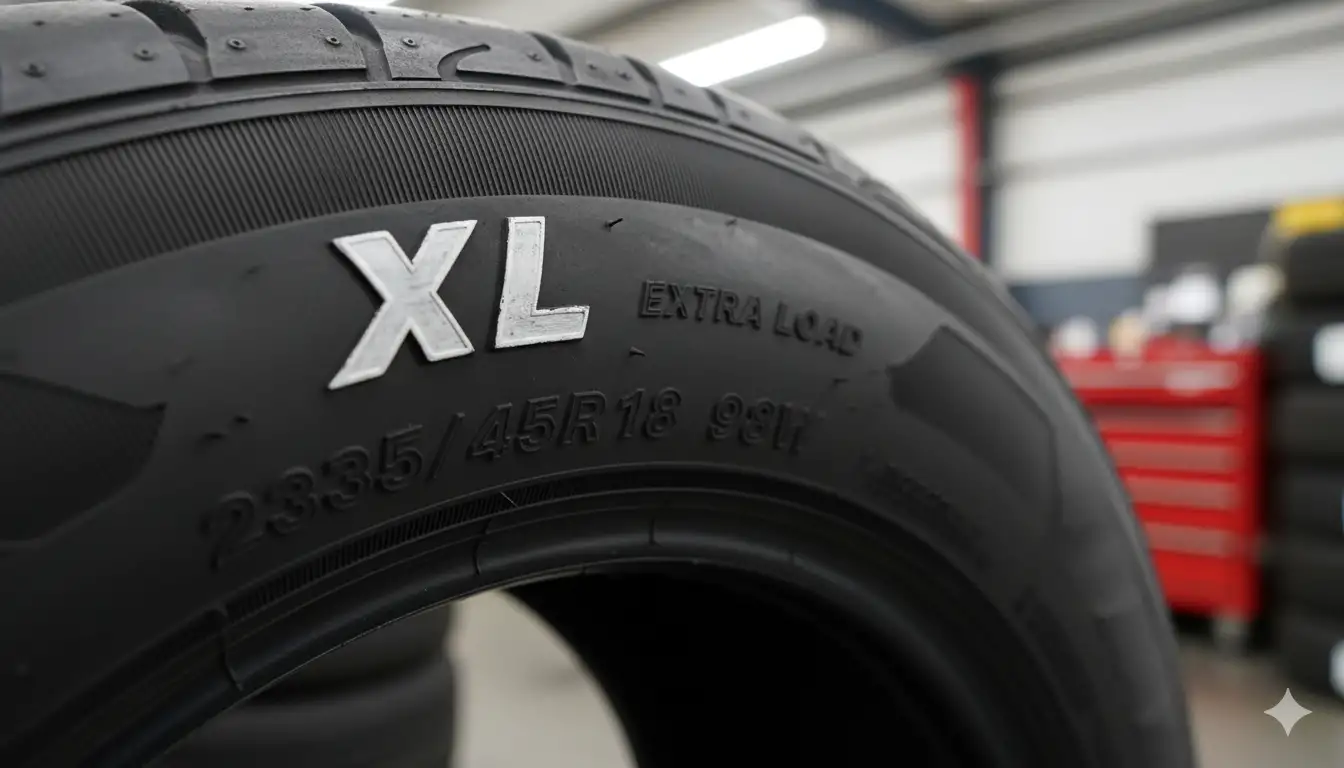
Key Takeaway
XL stands for “Extra Load,” not “Extra Large,” indicating reinforced construction that allows higher air pressure (41-42 PSI) and greater weight capacity than Standard Load tires. If your vehicle’s door placard specifies XL tires, you must replace them with XL tires for safety.
The XL designation represents a critical safety specification, not a marketing term or size indicator. These tires feature reinforced internal construction including stronger sidewalls and additional cord layers, enabling them to safely support 10-20% more weight than standard tires of identical external dimensions.
Modern vehicles increasingly require XL tires due to weight gains from safety equipment, comfort features, and especially electrification. Using Standard Load tires where Extra Load is specified risks tire failure, poor handling, and potential legal liability.
Next Steps
Check your driver’s door jamb placard for tire specifications, verify if XL is required for your vehicle, and always match or exceed the load index when replacing tires to maintain safety and handling characteristics.
Begin by photographing your tire placard for reference when tire shopping. When purchasing a new vehicle, confirm whether it requires XL tires to budget accordingly for replacements.
If your vehicle specifies XL tires, never downgrade to SL tires even if they appear to fit. The safety risks and potential warranty violations far exceed any cost savings. When replacing XL tires, ensure the new tires carry the same or higher load index number.
For vehicles where XL tires are optional, consider your typical driving conditions. If you frequently carry passengers and cargo, tow trailers, or drive aggressively, the extra cost of XL tires provides valuable safety margin. However, if you primarily commute alone on smooth highways, Standard Load tires may offer better comfort and value.
Monitor tire pressure carefully with XL tires, as they require higher inflation to achieve rated capacity. Regular maintenance becomes even more critical with specialty tires. Check pressures monthly when cold, and adjust according to your vehicle’s placard, not the tire’s maximum pressure marking.
When shopping for tires online or in-store, filter results by load rating to ensure you’re viewing appropriate options. Many tire retailers now offer specific search filters for XL/Reinforced tires, simplifying the selection process.
Finally, keep documentation showing you’ve maintained proper tire specifications. This protects you in insurance claims and warranty disputes while ensuring your vehicle operates safely as designed.
Frequently Asked Questions
What does XL mean on a tire?
XL stands for “Extra Load,” indicating the tire has reinforced internal construction allowing it to carry heavier weights at higher air pressures (typically 41-42 PSI) than standard tires.
Does XL on a tire mean “Extra Large”?
No, XL means “Extra Load” not “Extra Large.” XL tires have exactly the same external dimensions as standard tires of the same size designation, only with stronger internal construction.
What is the difference between an XL and an SL tire?
XL tires have reinforced sidewalls allowing 41-42 PSI maximum pressure and 10-20% higher load capacity, while SL (Standard Load) tires use 35-36 PSI with conventional construction for typical passenger vehicles.
Do I need to buy XL tires for my car?
Check your driver’s door jamb placard for tire specifications. If it indicates XL, Extra Load, or shows a load index requiring XL capacity, you must use XL tires for safety and proper handling.
What happens if I don’t use XL tires on a car that requires them?
Using SL tires instead of required XL tires can cause sidewall overheating, premature wear, poor handling, increased stopping distances, potential blowouts, and may void warranties or insurance coverage.
What does “RF” on a tire mean? Is it the same as XL?
RF stands for “Reinforced,” which is functionally identical to XL (Extra Load). Both designations indicate tires with enhanced load-carrying capacity through reinforced construction.
Do XL tires need more air pressure (PSI)?
Yes, XL tires typically require 41-42 PSI maximum cold pressure compared to 35-36 PSI for standard load tires to achieve their rated load capacity safely.
Is an XL tire better than a standard tire?
Neither is universally better; XL tires excel when extra load capacity is needed but provide a slightly firmer ride, while SL tires offer better comfort for vehicles not requiring additional capacity.
Do XL tires have a rougher or louder ride?
Yes, XL tires typically produce a 15-20% firmer ride and 2-3 decibels more road noise due to their stiffer reinforced sidewalls and higher operating pressures.
Are XL tires more expensive?
Yes, XL tires typically cost 10-20% more than equivalent Standard Load tires due to additional reinforcement materials, complex manufacturing processes, and lower production volumes.
Are XL tires the same as run-flat tires?
No, XL tires provide higher load capacity through reinforced construction, while run-flat tires feature self-supporting sidewalls allowing limited driving after complete pressure loss. Some tires combine both features.
Are XL tires good for SUVs or electric cars?
Yes, many SUVs and most electric vehicles require XL tires due to their heavier weight from larger size, AWD systems, or battery packs that exceed Standard Load tire capacity.
References
- Kwik Fit. (2021). What Does XL Mean on Tyres. Retrieved from https://www.kwik-fit.com/blog/what-does-xl-mean-on-tyres
- Tires Easy. (2025). XL Tires Guide: Benefits & When You Need Extra Load Capacity. Retrieved from https://www.tires-easy.com/blog/xl-tires-why-you-may-need-them/
- Capital Auto Parts. (2021). What Does XL Tires Mean. Retrieved from https://capitalautoparts.ca/blogs/default-blog/what-does-xl-tires-mean
- The Tire Reviews. (2025). SL vs XL Tires: What’s the Difference. Retrieved from https://thetirereviews.com/sl-vs-xl-tires-whats-the-difference/
- Tyre Hexa. (2024). Standard Load vs Extra Load Tires. Retrieved from https://tyrehexa.com/standard-load-sl-vs-extra-load-tires-xl/
- PitStopArabia. (2019). All You Need to Know About Extra Load Tires. Retrieved from https://www.pitstoparabia.com/en/news/what-are-xl-tires
- Tire Rack. (2025). What Is Maximum Load For A Tire. Retrieved from https://www.tirerack.com/upgrade-garage/what-is-maximum-load-for-a-tire
- Yokohama Tire. (2024). Air Pressure and Load Index Guide. Retrieved from https://yokohamatyre.com.vn/about-tires/air-pressure-load-index
- Discounted Wheel Warehouse. (2025). SL vs XL Tires: The Truth Behind Load Ratings. Retrieved from https://www.discountedwheelwarehouse.com/blog/post/tire-comparisons/sl-vs-xl-tires
- Michelin. (2025). Understanding Tyre Load Rating and Speed Rating. Retrieved from https://www.michelin.co.uk/auto/advice/tyre-basics/tyre-load-rating-speed-rating

I am a senior automotive analyst at Autvex. Expert vehicle evaluations, in-depth reviews, and objective analysis helping readers make informed automotive decisions with years of industry experience.

